You’re driving home after a long day at work, and suddenly, another car crashes into yours. In an instant, your reliable mode of transportation is rendered useless. As the shock wears off, a pressing question emerges: “How will I get around now?” This scenario highlights the critical importance of understanding your rights to an accident replacement vehicle. Let’s dive into the world of post-accident entitlements and ask, do you have the right to a replacement vehicle after an accident?, uncover what you need to know to keep your life moving forward, even when your car can’t.
Introduction
The importance of understanding your rights after a car accident
When you’re involved in a car accident, the aftermath can be overwhelming. Between dealing with injuries, insurance claims, and repairs, it’s easy to overlook one crucial aspect: your right to a replacement vehicle. Understanding this right is vital for maintaining your daily routine and minimizing disruption to your life. Without this knowledge, you might find yourself stranded, struggling to get to work, drop off kids at school, or run essential errands.
Knowing your entitlements empowers you to make informed decisions and ensures you’re not left out of pocket for expenses that should be covered. It’s not just about convenience; it’s about protecting your financial interests and maintaining your quality of life during a challenging time. By familiarizing yourself with your rights, you’re better equipped to navigate the complex landscape of post-accident procedures and negotiations with insurance companies.
Overview of the entitlement to a replacement vehicle in Australia
In Australia, the entitlement to an accident replacement vehicle is a well-established concept, though it can vary depending on the circumstances of the accident and your location. Generally, if you’re not at fault in an accident, you may be entitled to a replacement vehicle while your car is being repaired or replaced. This entitlement is rooted in the principle that the innocent party shouldn’t suffer additional hardship due to someone else’s negligence.
The process of obtaining a replacement vehicle typically involves working with insurance companies or specialized accident replacement vehicle providers. These services aim to get you back on the road quickly, often with a vehicle similar to your own. It’s important to note that the specifics of this entitlement can differ based on factors such as your insurance policy, the severity of the accident, and the laws in your state or territory.
Understanding these entitlements is crucial for several reasons. First, it ensures you don’t unnecessarily pay for a rental car when you might be eligible for a free replacement. Second, it helps you maintain your independence and daily routine during the repair process. Lastly, it provides peace of mind knowing that you have options available to keep your life on track after an unexpected accident.
Determining Fault in a Car Accident
When you’re involved in a car accident, one of the most crucial aspects to address is determining who’s at fault. This process can significantly impact your rights, including your entitlement to a replacement vehicle. Let’s explore the steps to identify fault and the implications for all parties involved.
Steps to identify who is at fault – do you have the right to a replacement vehicle after an accident?
Determining fault in a car accident isn’t always straightforward, but there are several key steps to follow:
- Gather evidence: Immediately after the accident, if you’re able, collect as much information as possible. This includes taking photos of the accident scene, vehicle damage, and any visible injuries. Also, gather contact information from witnesses.
- Review traffic laws: Familiarize yourself with the car accident fault determination rules in Australia. These rules can vary slightly between states, but generally, they outline common scenarios and who’s typically at fault in each situation.
- Analyze the accident report: Police reports often include an officer’s assessment of the accident, which can be valuable in determining fault. However, remember that this isn’t always the final word.
- Consider road conditions and signage: Factors like weather, road signs, and traffic signals can play a role in determining fault. For example, if someone hit your car while running a red light, they would likely be considered at fault.
- Consult with experts: In complex cases, accident reconstruction experts may be called upon to provide a professional analysis of the incident.
Remember, in car accidents, who is at fault isn’t always clear-cut. Sometimes, both parties may share responsibility to varying degrees.
Implications for both parties involved
The determination of fault has significant implications for all parties involved:
For the at-fault driver:
- They (or their insurance company) will typically be responsible for covering the costs of damages and injuries.
- Their insurance premiums may increase.
- They may face legal consequences, especially if laws were broken.
For the not-at-fault driver:
- They’re usually entitled to compensation for damages and injuries.
- They often have the right to a replacement vehicle while their car is being repaired.
- Their insurance premiums shouldn’t increase as a result of the accident.
It’s important to note that even if you’re not at fault, you might still need to deal with insurance companies. The question of “someone hit my car whose insurance do I call” often arises. While you can contact your own insurance company for guidance, you’ll typically need to file a claim with the at-fault driver’s insurance.
Understanding these implications underscores the importance of accurately determining fault. It not only affects immediate concerns like vehicle repairs and medical bills but can also have long-term consequences on insurance rates and legal liabilities. That’s why it’s crucial to approach the fault determination process carefully and, when necessary, seek professional legal advice to ensure your rights are protected.
Your Rights to a Replacement Vehicle
After a car accident, maintaining your right to drive is crucial for many aspects of daily life. Understanding your entitlement to accident replacement cars can help you navigate this challenging time more smoothly. Let’s explore the criteria for eligibility and the legal considerations under Australian law.
Criteria for eligibility
To be eligible for a replacement vehicle after an accident, several factors come into play:
- Fault determination: Generally, if you’re not at fault for the accident, you’re more likely to be eligible for a replacement vehicle.
- Vehicle condition: Your car must be undriveable or undergoing repairs due to the accident.
- Insurance coverage: Some insurance policies include replacement vehicle coverage. Check your policy details or consult with your insurer.
- Need for transportation: You must demonstrate a genuine need for a vehicle, such as for work or family responsibilities.
- Time frame: Eligibility often depends on how long your vehicle will be out of commission. Typically, if repairs will take more than a few days, you’re more likely to qualify.
It’s important to note that even if you don’t meet all these criteria, you may still have options. Some accident replacement car services offer vehicles regardless of fault, though terms may vary.
Legal considerations under Australian law
Australian law recognizes the importance of maintaining mobility after an accident. Here are some key legal points to consider:
- Right to mitigation: The law expects the not-at-fault party to take reasonable steps to mitigate their losses. This can include using a replacement vehicle instead of more expensive alternatives like taxis.
- Reasonable costs: If you’re entitled to a replacement vehicle, the at-fault party (or their insurer) is generally required to cover reasonable costs. This doesn’t mean you’re entitled to a luxury vehicle if you normally drive a standard car.
- Duration of entitlement: You’re typically entitled to a replacement vehicle for the reasonable repair time of your car. If your vehicle is a write-off, this period usually extends until you receive a settlement.
- Duty to inform: You have a responsibility to inform the relevant parties (insurers, replacement car providers) of any changes in your situation, such as when your car is repaired.
- Dispute resolution: If there’s a disagreement about your entitlement to a replacement vehicle, you may need to seek legal advice for a car accident. Many jurisdictions have specific processes for resolving these disputes.
Understanding these legal considerations is crucial. They not only protect your right to drive but also ensure you’re not left out of pocket due to someone else’s negligence. However, laws can be complex and vary between states. If you’re unsure about your rights or facing resistance from insurers, it may be wise to consult with a legal professional who specializes in car accident cases.
Remember, your right to a replacement vehicle is more than just a convenience—it’s an important aspect of maintaining your quality of life and minimizing the impact of an accident on your daily routine.
Replacement Vehicle Options and Procedures
When you’re involved in a car accident, understanding your options for a replacement vehicle is crucial. The process and eligibility can vary significantly depending on whether you’re the not-at-fault or at-fault driver. Let’s explore both scenarios to help you navigate this often complex situation.
Not-at-Fault Drivers: Process and Eligibility
If you’re a not-at-fault driver in a car accident, you generally have more favorable options for obtaining a replacement vehicle. Here’s what you need to know:
- Immediate action: After the accident, contact your insurance company immediately. They can guide you through the process of obtaining a rental car not at fault accident.
- Insurance coverage: Check your policy for rental car coverage. Even if you don’t have this coverage, as the not-at-fault party, you may be entitled to an insurance replacement car from the at-fault driver’s insurance.
- Documentation: Gather all necessary documents, including the police report, which can help establish that you were not at fault.
- Rental process: Your insurance company or the at-fault party’s insurer will typically arrange for a rental car. According to the Illinois Department of Insurance, “If the insurance company elects to replace your vehicle, the replacement must be a specific make and model comparable to your totaled vehicle, and it must be available in as good or better overall condition than your totaled vehicle.“
- Duration: You’re usually entitled to a replacement vehicle for the duration of repairs or until your claim is settled if your car is totaled.
- Dispute resolution: If there’s disagreement about fault or replacement vehicle entitlement, you may need to seek legal advice for your car accident.
Remember, as the Washington State Office of the Insurance Commissioner states, “The insurer owes you the actual cash value of your totaled car, and they may offer to replace your car with an available and comparable car in your local area.” This ensures you’re not left without transportation due to someone else’s negligence.
At-Fault Drivers: Understanding Your Limited Options
If you’re determined to be at fault in a car accident, your options for a replacement vehicle are more limited, but you’re not entirely without recourse:
- Insurance coverage: Check your policy for rental car coverage. Some policies include this even for at-fault accidents, though it’s less common.
- Out-of-pocket rental: You may need to pay for a rental car yourself. Some rental companies offer discounts for insurance-related rentals.
- Alternative transportation: Consider public transportation or ride-sharing services if renting isn’t feasible.
- Negotiation with your insurer: In some cases, your insurance company might provide a courtesy car, especially if you have a comprehensive policy.
- Expedited repairs: Work with your insurer to expedite the repair process, minimizing the time you’re without a vehicle.
It’s important to note that if you’re at fault, you’re generally responsible for your own transportation costs. However, if fault is disputed or shared, you may have more options.
In both scenarios, understanding your rights is crucial. As the Illinois Department of Insurance points out, “If you reject a replacement vehicle, the insurance company must pay only the amount it would have otherwise paid for the replacement vehicle, including applicable taxes, transfer, and title fees.” This underscores the importance of carefully considering your options before making a decision.
Remember, whether you’re at fault or not, always communicate clearly with your insurance provider and don’t hesitate to ask questions about your coverage and options for a replacement vehicle.
The Like-for-Like Replacement Vehicle Principle
When you’re dealing with the aftermath of a car accident, understanding the concept of like-for-like replacement can be crucial. This principle ensures that you receive a replacement car that closely matches your own vehicle in terms of quality, functionality, and value. Let’s delve into what this means and why it’s beneficial for you.
What does like-for-like mean?
The like-for-like principle in the context of replacement cars refers to providing a vehicle that is as similar as possible to your original car. This doesn’t necessarily mean an identical make and model, but rather a car that matches key characteristics:
- Size and type: If you drive a compact sedan, you should receive a similar compact sedan as a replacement.
- Features and amenities: The replacement car should have comparable features to your own vehicle, such as air conditioning, automatic transmission, or GPS.
- Age and condition: The replacement vehicle should be of similar age and in comparable condition to your car before the accident.
- Fuel efficiency: The fuel consumption of the replacement car should be similar to your original vehicle.
- Carrying capacity: If you have a family car or a vehicle used for work purposes, the replacement should have similar passenger or cargo capacity.
The goal is to ensure that your daily life is disrupted as little as possible while your car is being repaired or replaced.
Benefits of receiving a like-for-like replacement
Receiving a like-for-like replacement car offers several advantages:
- Minimal lifestyle disruption: By having a similar vehicle, you can maintain your usual routines without significant adjustments.
- Familiarity: Driving a car with similar characteristics to your own can help reduce stress during an already challenging time.
- Fair compensation: Like-for-like ensures you’re not downgraded to a lesser vehicle or forced to adapt to a significantly different one.
- Cost-effective: You won’t incur additional expenses that might come with a vastly different vehicle, such as higher fuel costs.
- Work continuity: If you use your car for work, a like-for-like replacement helps maintain your professional capabilities.
- Family needs: For those with families, a similar vehicle ensures you can continue to meet your family’s transportation needs.
- Accurate assessment: It allows for a more precise evaluation of any additional costs or inconveniences caused by the accident.
The like-for-like principle is designed to uphold your right to fair treatment following an accident. It ensures that replacement cars truly serve their purpose – to keep you mobile and minimize the impact on your daily life while your vehicle is out of commission.
Remember, while the goal is to provide a close match, exact replicas are not always possible. The focus is on providing a replacement that meets your essential needs and closely aligns with the functionality of your original vehicle. If you feel the offered replacement car doesn’t meet the like-for-like criteria, don’t hesitate to discuss this with your insurance provider or legal representative to ensure you receive a fair and suitable replacement.
Navigation Through Insurance Policies
Understanding how to navigate through insurance policies is crucial when you’re involved in a car accident. This knowledge can significantly impact your ability to secure a replacement vehicle and manage the financial aftermath of the incident. Let’s explore how to deal with insurance claims and maximize your entitlements while minimizing out-of-pocket expenses.
Dealing with insurance claims
The car accident insurance claim process can be complex, but knowing the steps can help you navigate it more effectively:
- Report the accident: Contact your insurance company as soon as possible after the accident. Prompt reporting is often a requirement in insurance policies.
- Provide detailed information: When filing insurance claims for car accidents, be prepared to provide a thorough account of the incident, including photos, witness statements, and the police report if available.
- Understand your policy: Familiarize yourself with your insurance coverage. Know what types of claims you can make and what exclusions might apply.
- Keep records: Document all communications with insurance companies, including dates, names, and summaries of conversations.
- Be patient but proactive: Insurance claims can take time, but don’t hesitate to follow up regularly on the status of your claim.
- Consider professional help: If your claim is complex or disputed, you might benefit from legal advice or the assistance of a public adjuster.
Remember, how do insurance claims work can vary between companies and policies. Always refer to your specific policy documents and don’t hesitate to ask your insurer for clarification on any points you’re unsure about.
Minimising out-of-pocket expenses and maximising entitlements
To ensure you get the most out of your insurance claim while keeping your costs low:
- Understand your excess: Know what excess (deductible) you’re required to pay and how it affects your claim.
- Explore all coverage options: Check if you have additional coverages like rental car reimbursement or loss of use compensation.
- Get multiple repair quotes: If your insurer allows it, obtain several repair estimates to ensure fair pricing.
- Question any claim denials: If your claim is denied, ask for a detailed explanation and consider appealing if you believe the decision is incorrect.
- Negotiate: Don’t be afraid to negotiate with your insurer, especially if you believe their settlement offer is too low.
- Utilize all available benefits: If you’re entitled to a replacement vehicle, make sure you receive one that meets the like-for-like principle.
- Be wary of quick settlements: While it’s tempting to settle quickly, ensure you understand the full extent of damages and potential future costs before accepting an offer.
- Consider future implications: Understand how making a claim might affect your future premiums and weigh this against the benefits of claiming.
- Explore no-claim bonuses: If you have a no-claim bonus, consider whether it’s worth preserving by paying for minor damages out-of-pocket.
- Seek independent advice: For significant claims, it might be worth consulting with an independent insurance advisor or lawyer to ensure you’re maximizing your entitlements.
By understanding the intricacies of the car accident insurance claim process and your policy details, you can navigate this challenging situation more effectively. Remember, your goal is to restore your situation to what it was before the accident, including securing appropriate transportation, while minimizing your financial burden. Don’t hesitate to ask questions and advocate for your rights throughout the claims process.
Avoiding Common Pitfalls and Protecting Your Rights
After a car accident, protecting your rights and avoiding common mistakes is crucial. This section will guide you through the essential steps of documentation, evidence collection, and negotiation to ensure you’re in the best position to secure your entitlements, including your right to a replacement vehicle.
Documentation and evidence collection post-accident
Proper documentation and evidence collection are vital for supporting your claim and protecting your rights. Here’s what you need to do:
- Accident scene documentation:
- Take photos of all vehicles involved, including damage and positions
- Capture images of the surrounding area, including road conditions and traffic signs
- Record video if possible, providing a 360-degree view of the scene
- Witness information:
- Collect names and contact details of any witnesses
- Ask if they’re willing to provide a written statement
- Police report:
- Ensure a police report is filed, especially for accidents with significant damage or injuries
- Obtain a copy of the report for your records
- Personal account:
- Write down your recollection of the event as soon as possible while details are fresh
- Include date, time, weather conditions, and any other relevant factors
- Medical records:
- Keep detailed records of any medical treatment received, including diagnoses and bills
- Document any ongoing symptoms or limitations resulting from the accident
- Communication log:
- Maintain a record of all conversations with insurance companies, including dates, names, and summaries
- Save all emails and written correspondence related to the accident
Remember, thorough documentation can significantly strengthen your position when dealing with insurance companies or in potential legal proceedings.
Negotiating with insurance companies and other parties
Effective negotiation is key to ensuring you receive fair treatment and compensation. Here are some strategies to employ:
- Know your rights:
- Familiarize yourself with your insurance policy and local laws regarding accident claims
- Consider seeking free car accident legal advice to understand your position better
- Be prepared:
- Gather all your documentation before initiating negotiations
- Have a clear idea of what you’re entitled to, including replacement vehicle rights
- Stay calm and professional:
- Emotional responses can hinder negotiations
- Stick to the facts and avoid admitting fault or speculating about the accident
- Don’t accept the first offer:
- Insurance companies often start with a low offer
- Be prepared to counter with evidence supporting your claim for higher compensation
- Focus on your needs:
- Clearly communicate your requirements, especially regarding a replacement vehicle
- Emphasize any financial hardships or inconveniences caused by the accident
- Get offers in writing:
- Insist on written offers to avoid misunderstandings
- Review all documents carefully before signing
Formal Steps Towards a Timely Resolution
- Consider mediation:
- If negotiations stall, suggest mediation as an alternative to legal action
- A neutral third party can often help reach a fair agreement
- Know when to seek help:
- If negotiations become complex or you feel overwhelmed, don’t hesitate to seek professional help
- Many lawyers offer free car accident legal advice for initial consultations
- Be patient but persistent:
- Insurance claims can take time, but regular follow-ups can keep the process moving
- Set realistic expectations for the timeline of your claim resolution
- Document all negotiations:
- Keep detailed records of all conversations and offers
- This documentation can be crucial if you need to escalate your claim
By following these guidelines for documentation and negotiation, you’ll be better equipped to protect your rights and secure fair treatment, including your entitlement to a replacement vehicle. Remember, knowledge is power in these situations, so don’t hesitate to seek additional information or professional advice when needed.
Litigation: When to Consider Taking Legal Action
While most car accident cases are resolved through insurance claims and negotiations, there are situations where legal action becomes necessary. Understanding when and how to pursue litigation can be crucial in protecting your rights, especially when it comes to securing a replacement vehicle. Let’s explore the circumstances that might warrant court intervention and the importance of legal advice in this process.
Cases where court intervention might be necessary
There are several scenarios where taking legal action might be the best or only course of action:
- Disputed liability: If there’s disagreement about who’s at fault for the accident, and negotiations have reached an impasse, court intervention may be necessary to determine liability.
- Insufficient compensation: When insurance companies offer settlements that don’t adequately cover your losses, including the cost of a suitable replacement vehicle, litigation might be the only way to secure fair compensation.
- Denied claims: If your insurance claim is unfairly denied, and appeals within the insurance company have been unsuccessful, legal action may be required to challenge the decision.
- Bad faith practices: If an insurance company is acting in bad faith, such as unreasonably delaying your claim or misrepresenting policy terms, court intervention can help hold them accountable.
- Complex cases: Accidents involving multiple parties, severe injuries, or significant property damage may require legal proceedings to resolve all aspects of the case fairly.
- Statute of limitations: If negotiations are dragging on and you’re approaching the legal time limit for filing a lawsuit, initiating legal action may be necessary to preserve your rights.
Remember, litigation should typically be considered a last resort after other avenues have been exhausted. It’s often time-consuming and can be costly, but in some cases, it’s the only way to ensure your rights are protected.
The role of legal advice in securing a replacement vehicle
Legal advice can play a crucial role in securing a replacement vehicle, even if your case doesn’t go to court:
- Understanding your rights: A lawyer can help you understand your entitlements under the law and your insurance policy, ensuring you don’t settle for less than you deserve.
- Negotiation support: Legal professionals can provide valuable assistance in negotiations with insurance companies, often leading to better outcomes, including securing a suitable replacement vehicle.
- Evidence gathering: Lawyers can help ensure you have all the necessary documentation and evidence to support your claim for a replacement vehicle.
- Policy interpretation: Insurance policies can be complex. Legal advice can help you understand the fine print and identify any clauses that support your right to a replacement vehicle.
- Challenging denials: If your claim for a replacement vehicle is denied, a lawyer can help you challenge this decision effectively.
Legal Options & Dispute Resolution Options
- Exploring all options: Legal professionals can advise on alternative dispute resolution methods, such as mediation, which might help you secure a replacement vehicle without going to court.
- Representation in court: If litigation becomes necessary, having legal representation significantly increases your chances of a favorable outcome, including securing compensation for a replacement vehicle.
- Timely action: Lawyers can ensure that all necessary legal actions are taken within the required timeframes, protecting your rights to compensation and a replacement vehicle.
- Maximizing compensation: Legal advice can help you identify all potential areas of compensation, ensuring you don’t overlook any entitlements related to your need for a replacement vehicle.
- Peace of mind: Knowing you have professional legal support can reduce stress and allow you to focus on recovery while your rights are being protected.
While not every car accident case requires legal action, having access to legal advice can be invaluable in navigating the complexities of insurance claims and securing your rights to a replacement vehicle. If you’re unsure about your situation, many lawyers offer initial consultations where you can discuss your case and understand your options before deciding whether to pursue legal action.
Frequently Asked Questions (FAQs)
What if I’m partially at fault?
If you’re partially at fault for an accident, your right to a replacement vehicle may be affected, but not necessarily eliminated. The extent of your entitlement often depends on the degree of fault assigned to you and the specific laws in your jurisdiction. In many cases, you may still be eligible for a replacement vehicle, but you might be responsible for a portion of the costs. It’s crucial to discuss your situation with your insurance provider and consider seeking legal advice to understand your rights fully.
How long can I keep the replacement vehicle?
The duration you can keep a replacement vehicle typically depends on several factors:
- If your car is being repaired: You can usually keep the replacement until your vehicle is fixed and returned to you.
- If your car is declared a total loss: You may be allowed to keep the replacement until you receive a settlement and have the opportunity to purchase a new vehicle.
- Insurance policy terms: Some policies have specific time limits for replacement vehicles.
Generally, the principle is that you should have access to a replacement for a reasonable period necessary to restore your transportation situation. Always check with your insurance provider for the specific terms applicable to your case.
Can I choose the make and model of my replacement car?
While you typically can’t choose any make and model you want, you’re usually entitled to a vehicle that’s comparable to your own. This is known as the “like-for-like” principle. The replacement should be similar in terms of size, features, and value to your original vehicle. If a comparable car isn’t available, you might be offered a slightly better vehicle. However, if you wish to upgrade significantly, you may need to pay the difference in cost.
Conclusion
Summary of key points on the right to a replacement vehicle after an accident
Throughout this article, we’ve explored several crucial aspects of your right to a replacement vehicle after an accident:
- Eligibility often depends on who’s at fault in the accident.
- The “like-for-like” principle ensures you receive a comparable replacement.
- Insurance policies play a significant role in determining your entitlements.
- Proper documentation and evidence collection are vital for supporting your claim.
- Negotiation skills can help maximize your benefits and minimize out-of-pocket expenses.
- In some cases, legal action may be necessary to secure your rights.
- The duration of your entitlement to a replacement vehicle varies based on your specific situation.
The importance of being informed and prepared
Being well-informed about your rights and prepared to act in the event of an accident is crucial. This knowledge empowers you to:
- Make informed decisions in the immediate aftermath of an accident.
- Effectively communicate with insurance companies and other parties involved.
- Recognize when you’re not being offered fair compensation or treatment.
- Know when to seek professional legal advice.
- Minimize the disruption to your daily life by securing appropriate transportation quickly.
Remember, each accident situation is unique, and laws can vary by location. While this guide provides a comprehensive overview, it’s always advisable to consult with your insurance provider and, if necessary, a legal professional to understand your specific rights and options. By staying informed and prepared, you can navigate the challenging post-accident period more effectively, ensuring you receive the replacement vehicle and compensation you’re entitled to.


























![for Magsafe Car Mount, Phone Holders for Your Car, [Strongest Magnets][Unlimited Angles]Magnetic Car Phone Holder Vent, Car Accessories for iPhone 16 15 Pro Plus Max 14 13 12 Mini MagSafe Case Phones](https://m.media-amazon.com/images/I/711AfHkiKZL._AC_SL1500_.jpg)
![[Military-Grade Reliable Suction] Miracase Car Phone Holder, Universal Mobile Phone Holder for car, car Phone Mount for Dashboard Windshield Vent Compatible with All Smartphones Dark Black](https://m.media-amazon.com/images/I/71Tvz7VrrbL._AC_SL1500_.jpg)